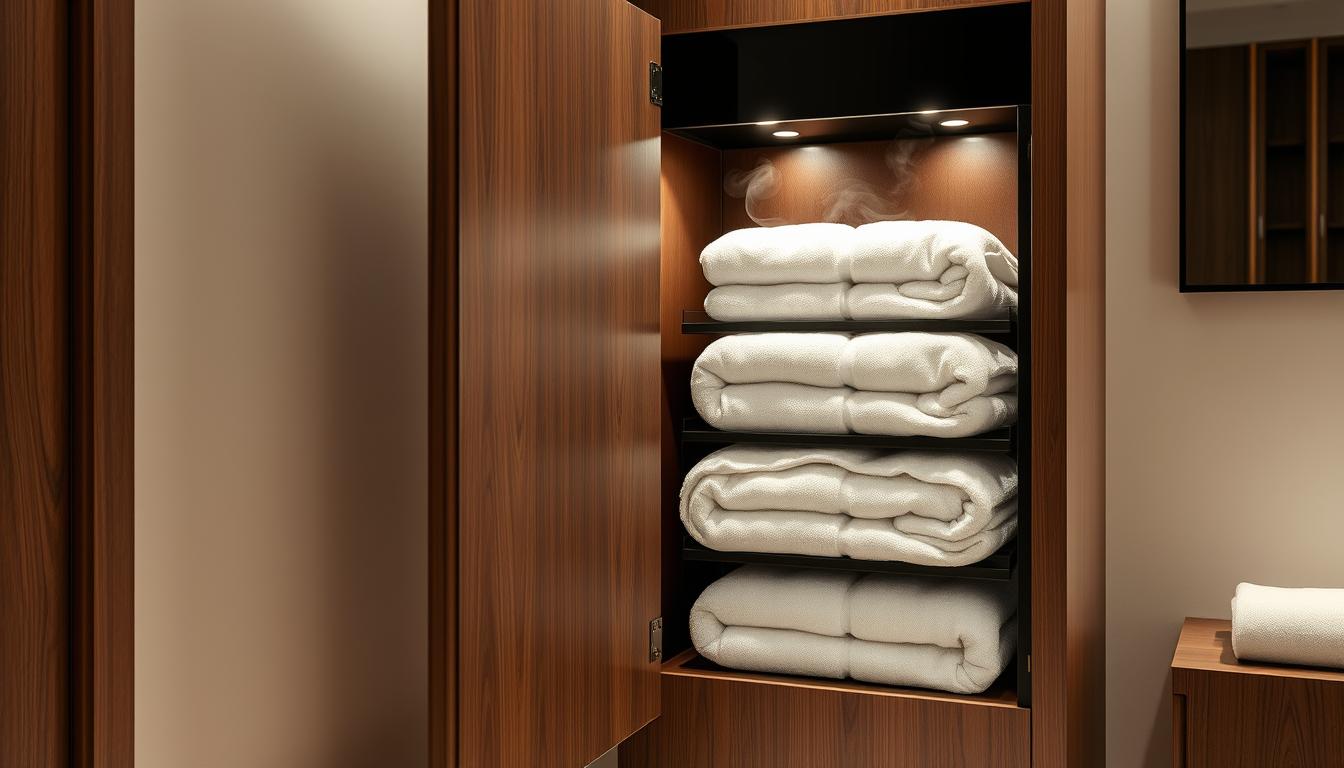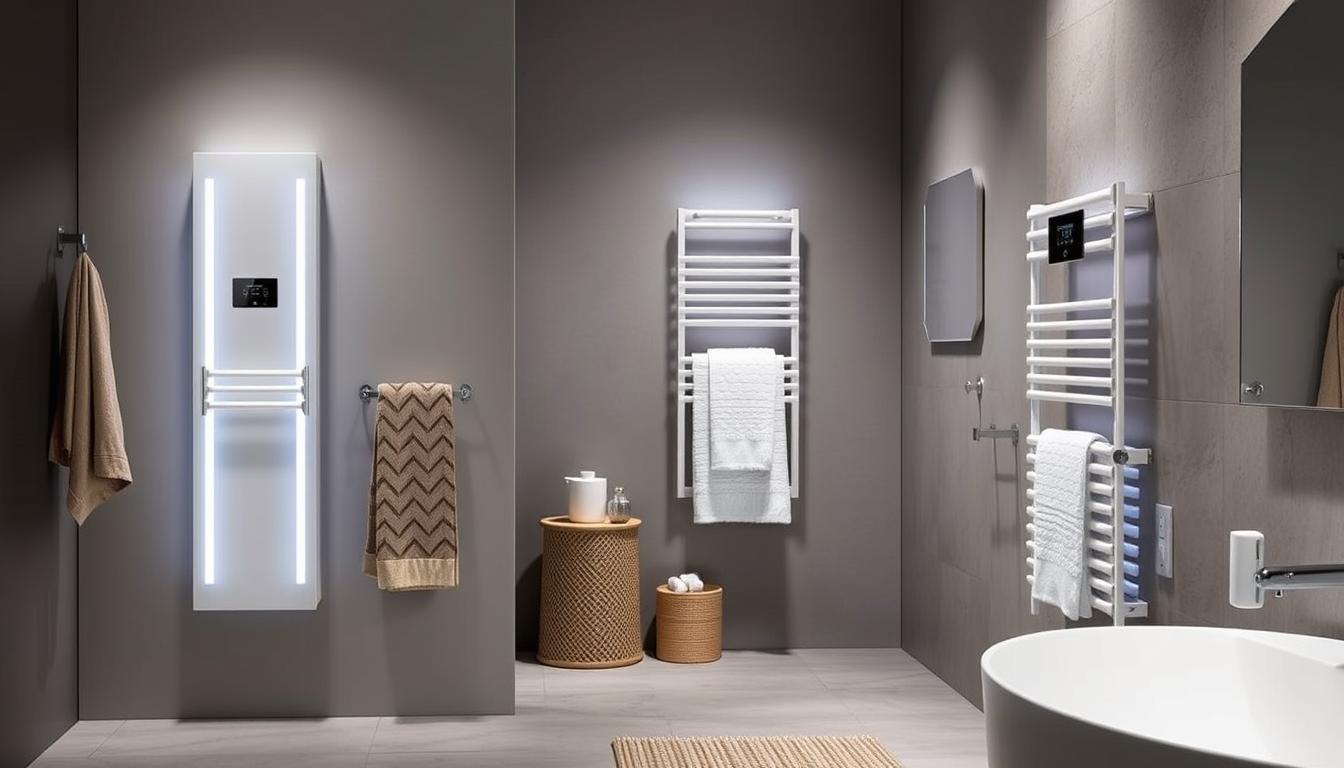Bidets have gained popularity worldwide and are becoming more common in the United States as well. They provide a simple and refreshing way to maintain cleanliness and reduce the use of toilet paper. However, many people still have misconceptions about bidets. In this article, we will address some of the frequently asked questions about bidets and specifically focus on the source of bidet water.
Key Takeaways:
- Understanding the source of bidet water is crucial in dispelling misconceptions about bidets.
- There are different types of bidets, and their water supply systems vary accordingly.
- Some bidet models, like tankless bidets, do not rely on a traditional water tank for their water supply.
- Bidet water supply systems offer advantages such as improved hygiene, adjustable water pressure and temperature, and reduced toilet paper usage.
- Troubleshooting bidet water supply issues may involve checking the T-valve and water filter.
How Does a Bidet Work?
Bidets are versatile and easy-to-use personal hygiene devices that come in various types, including electronic bidet toilet seats, bidet attachments, hand-held bidets, and travel bidets. They offer a superior alternative to traditional methods of cleaning, such as toilet paper. Curious about how they work? Let’s dive in!
Understanding the Bidet Water Supply System
A key component of bidets is the water supply system, which ensures a refreshing and effective cleansing process. When you use a bidet, clean water is supplied from a designated source and directed to the desired area through a spray nozzle.
Electronic bidet toilet seats and bidet attachments typically connect to the existing water supply of your bathroom. They are equipped with hoses or pipes that draw water from the household plumbing system. Hand-held bidets and travel bidets, on the other hand, can be filled with water manually and do not require a direct connection to the plumbing.
The bidet’s water supply system ensures a continuous flow of water, enabling you to experience a thorough and sanitary cleanse each time you use it.
The Bidet Cleansing Process
Now that you know how bidets receive water, let’s explore the actual cleansing process. When you activate the bidet, water is released from the supply system and directed to the targeted area through a spray nozzle. The spray nozzle is strategically positioned to ensure optimal cleaning.
The strength and temperature of the water spray can often be adjusted based on personal preferences. Higher water pressure can provide a more invigorating cleanse, while lower pressure offers a gentle and soothing experience. Some bidets even allow you to customize the water temperature, allowing for an added level of comfort.
As the water makes contact with the skin, it effectively cleanses, leaving you feeling fresh and revitalized. The bidet’s cleansing process reduces the need for excessive wiping, promoting better hygiene and preventing potential irritation.
Bidet Types: A Closer Look
Now that you have a better understanding of how bidets work, let’s take a closer look at the different types available:
| Bidet Type | Description |
|---|---|
| Electronic Bidet Toilet Seat | An advanced bidet that replaces your existing toilet seat and offers a range of features, such as heated water, adjustable water pressure, and customizable settings. |
| Bidet Attachment | An attachment that can be installed on your existing toilet, providing a cost-effective way to enjoy the benefits of a bidet without replacing your entire toilet. |
| Hand-held Bidet | A portable device that allows you to manually control the water flow for personal cleansing. It is typically used alongside your regular toilet. |
| Travel Bidet | A compact and convenient bidet designed for travel, allowing you to maintain personal hygiene even when away from home. |
Each bidet type offers unique features and installation options, catering to different preferences and needs. Whether you choose an electronic bidet toilet seat for a luxurious bathroom experience or a portable travel bidet for on-the-go freshness, bidets provide exceptional cleanliness and comfort.
“Using a bidet is not only hygienic but also helps reduce the environmental impact of excessive toilet paper use. It’s a win-win!”
Now that you have a clear understanding of how bidets work, you can confidently explore the various options available and choose the perfect bidet for your personal needs and preferences. Say goodbye to conventional cleaning methods and embrace the refreshing benefits of a bidet for a cleaner, more hygienic lifestyle.
Is Bidet Water Sourced From the Tank?
The source of bidet water depends on the type of bidet. Let’s explore the different options and understand where the water comes from.
“The source of bidet water can vary depending on the type of bidet you have installed.”
Tankless Bidets
Some bidets, particularly tankless bidet models, do not have a water tank. Instead, they use a direct water supply from the plumbing system. This means that the bidet is connected to the bathroom’s water line, allowing for an uninterrupted flow of water. Another option for tankless bidets is a T-valve, which diverts water from the toilet tank to the bidet.
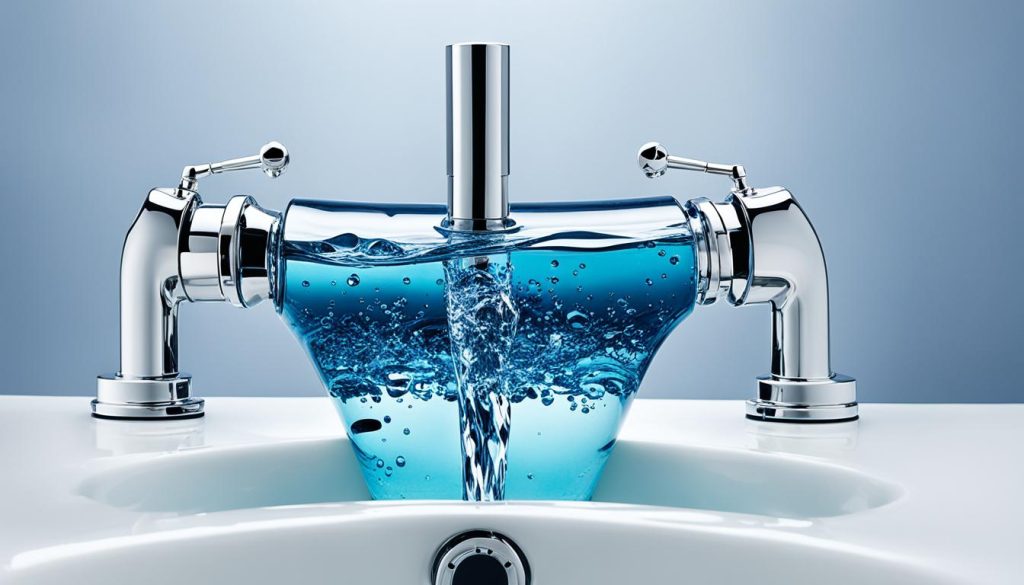
Tank-Type Bidets
On the other hand, tank-type bidets have a built-in water tank that stores and supplies water for cleansing purposes. The water in the tank is replenished through a connection to the household water supply. This ensures that the bidet always has a sufficient amount of water ready for use.
Now that you understand the different bidet water sources, you can choose the option that best suits your needs and preferences. Whether you opt for a tankless bidet with a direct water supply or a tank-type bidet with a built-in water tank, both options provide an effective and convenient way to maintain personal hygiene.
| Type of Bidet | Water Source |
|---|---|
| Tankless Bidets | Direct water supply from the plumbing system or diverted water from the toilet tank using a T-valve |
| Tank-Type Bidets | Built-in water tank connected to the household water supply |
By understanding the bidet water source, you can make an informed decision when choosing a bidet for your bathroom. Whether you prefer the convenience of a tankless bidet or the reliability of a tank-type bidet, both options provide a refreshing and hygienic cleaning experience.
Advantages of Bidet Water Supply Systems
Discover the numerous benefits of bidet water supply systems, which are rapidly gaining popularity for their ability to revolutionize personal hygiene. Bidets offer a superior level of cleanliness compared to traditional toilet paper, thanks to their advanced water-based cleansing technology.
Improved Hygiene and Comfort
Bidet water supply systems provide a gentle and effective cleansing experience, promoting improved hygiene and comfort. Unlike toilet paper, which may leave residue or irritate sensitive skin, bidets use a stream of water to effectively remove bacteria and contaminants. The adjustable water pressure ensures a customized and soothing experience, accommodating individual preferences.
Adjustable Water Temperature
One of the key advantages of bidet water supply systems is the ability to adjust the water temperature according to your comfort level. Choose between warm or cold water options, as per your preference. This feature ensures a pleasant cleansing experience all year round.
Environmental Benefits and Cost Savings
Bidet water supply systems offer significant environmental benefits by reducing the use of toilet paper. By minimizing reliance on disposable paper products, bidets help conserve natural resources and reduce waste. Additionally, bidets can lead to substantial cost savings over time as the need to purchase toilet paper decreases.
| Advantages | Benefits |
|---|---|
| Improved Hygiene: | Cleanse thoroughly and effectively |
| Adjustable Water Pressure: | Customize your cleansing experience |
| Adjustable Water Temperature: | Enjoy a comfortable cleansing experience |
| Environmental Benefits: | Reduce waste and promote sustainability |
| Cost Savings: | Minimize the need to purchase toilet paper |
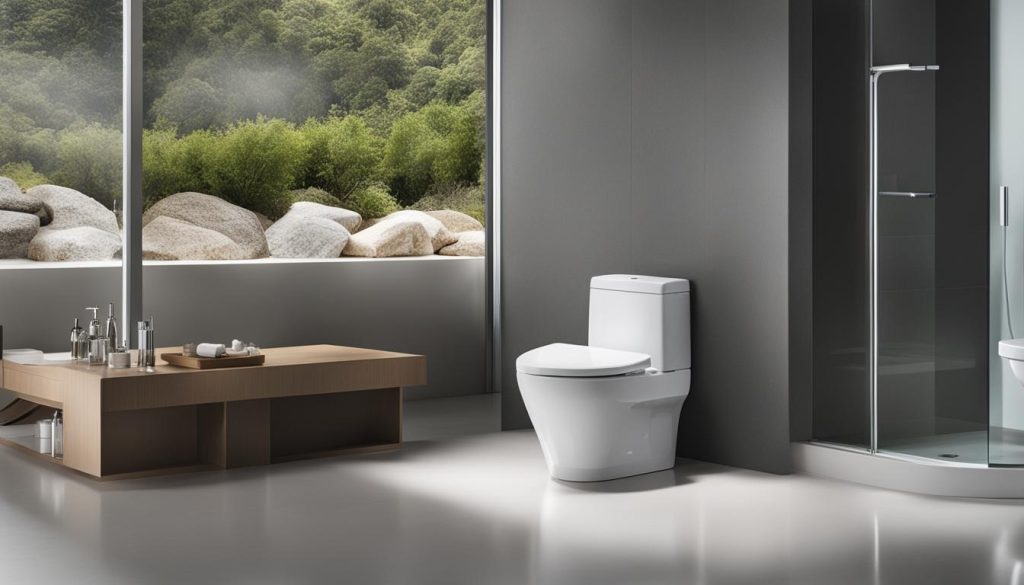
Upgrade to a bidet water supply system to enjoy the unparalleled cleanliness, comfort, and environmental advantages it offers. Say goodbye to traditional wiping methods and embrace the modern approach to personal hygiene.
Troubleshooting Bidet Water Supply Issues
In some cases, bidet water supply problems may occur, causing inconvenience and frustration. If you find yourself facing such issues, follow these troubleshooting steps to identify and resolve the problem.
1. Check the Main Water Opening Switch
Ensure that the main water opening switch, which controls the water supply to your bidet, is turned on. Sometimes, it may accidentally get switched off, causing a disruption in the water flow. Verify that the switch is in the correct position.
2. Verify Power Supply to the Bidet Seat
If you’re using an electronic bidet seat, make sure it is receiving power. Check the power connection, and ensure that the wall outlet or the bidet’s power source is functioning correctly. Sometimes, a loose or disconnected power cord can result in a lack of water flow.
3. Perform a Reset
If your bidet has a reset function, try performing a reset. This can help resolve any temporary glitches or malfunctions that may be affecting the water supply. Refer to the bidet’s user manual for specific instructions on how to perform a reset.
4. Check the T-Valve
The T-valve is a crucial component that connects the water supply to your bidet. If you’re experiencing a complete lack of water flow, the T-valve may need adjustment or cleaning. Ensure that it is securely connected and check for any debris or blockages that may be obstructing the water flow.
5. Inspect the Water Filter
If your bidet is equipped with a water filter, inspect it for any clogs or build-up. A dirty or clogged filter can impede the water flow, resulting in reduced or no water supply. Clean or replace the filter as necessary according to the manufacturer’s instructions.
If the troubleshooting steps above do not resolve the issue, it may be time to seek professional repair services. Bidet water supply problems can sometimes be more complex and require the expertise of a trained technician to diagnose and fix.
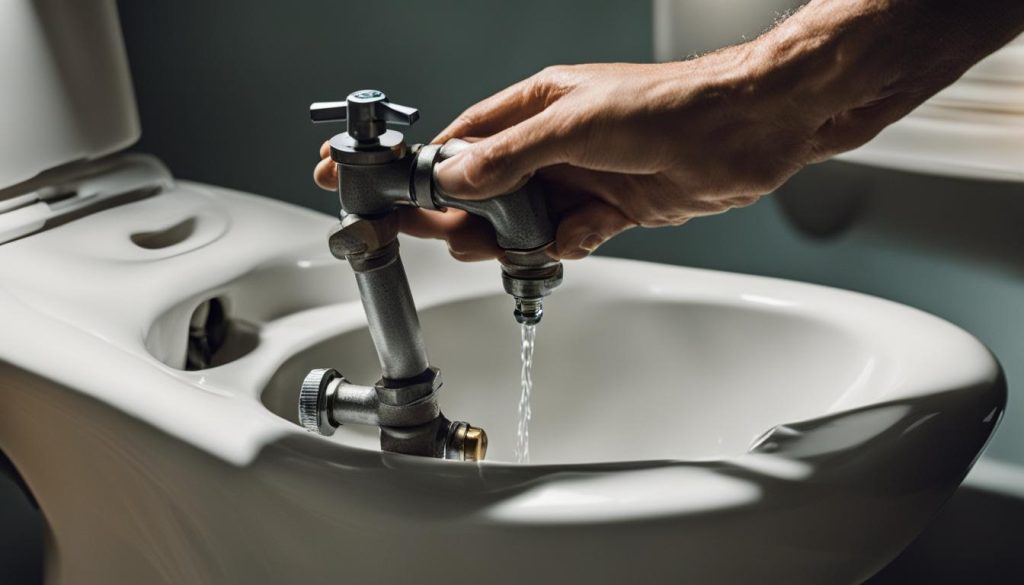
Remember, maintaining a consistent and reliable bidet water flow is essential for a satisfactory bidet experience. By addressing and resolving bidet water supply problems promptly, you can continue to enjoy the refreshing benefits and hygienic cleansing that bidets provide.
Choosing the Right Bidet for Your Needs
When it comes to selecting a bidet, it’s essential to take into account your specific requirements and preferences. With a wide range of bidet options available, including bidet toilet seats, bidet attachments, hand-held bidets, and travel bidets, there is a solution to suit every individual. Each type of bidet offers unique features and installation options, allowing you to customize your bathroom experience.
One important factor to consider is water pressure. Some bidets provide adjustable water pressure, allowing you to customize the intensity of the cleansing spray. Another consideration is temperature control, as certain bidets offer the ability to adjust the water temperature to your comfort level. Additionally, you may want to explore bidets with additional functions like air-drying or deodorizing capabilities, further enhancing your hygiene routine.
Of course, cost is also a significant factor in choosing the right bidet for your needs. Bidet prices can vary depending on the brand, type, and features offered. By understanding your budget and doing some research, you can find a bidet that fits your requirements without breaking the bank.
Ultimately, the key to choosing the right bidet is to consider your unique preferences, explore the available options, and select a bidet that aligns with your needs. With the variety of bidet types, features, and costs available, you can enhance your bathroom experience and enjoy the benefits of improved hygiene and comfort.
FAQ
Does bidet water come from the tank?
Bidets have different water sources depending on the type. Tankless bidets use a direct water supply from the plumbing, while tank-type bidets have a built-in water tank that stores and supplies water.
How does a bidet work?
Bidets use a water supply system to provide a clean spray of water for personal hygiene. The water comes from a designated water source and is directed to the desired area through a spray nozzle.
Is bidet water sourced from the tank?
Yes, some bidets have a built-in water tank that stores and supplies water for cleansing purposes. The water in the tank is replenished through a connection to the household water supply.
What are the advantages of bidet water supply systems?
Bidet water supply systems offer a more thorough and hygienic clean compared to traditional wiping with toilet paper. The water pressure and temperature can be adjusted for personalized comfort. They also reduce the use of toilet paper, leading to cost savings and environmental benefits.
How can I troubleshoot bidet water supply issues?
If you experience water flow issues, check the main water opening switch and power supply. Ensure the T-valve, which connects the water supply to the bidet, is adjusted or cleaned if necessary. Inspecting the water filter and seeking professional repair services may also be helpful.
How do I choose the right bidet for my needs?
Consider factors such as water pressure, temperature control, additional functions (e.g., air-drying, deodorizing), and overall cost when choosing a bidet. Explore different types of bidets, including bidet toilet seats, attachments, hand-held bidets, and travel bidets, to find one that suits your specific requirements.

